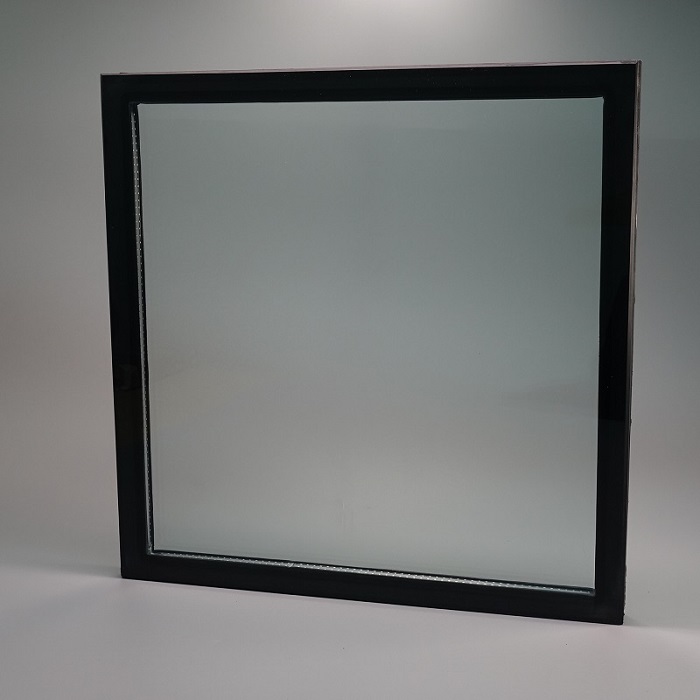
2025-01-02 14:50:19
Hollow LOW-E Glass: Enhancing Energy Efficiency and Comfort in Modern Architecture
As the construction industry increasingly emphasizes energy efficiency and environmental sustainability, new building materials have gained widespread use. Hollow LOW-E Glass is one such material, offering exceptional energy performance and comfort, making it an essential part of contemporary architectural design. Through a combination of multi-layered structure and low-emissivity coatings, this glass effectively isolates heat, reduces ultraviolet radiation, and improves both energy efficiency and the comfort of buildings.

The Principles and Advantages of LOW-E Glass
LOW-E glass, which stands for "Low Emissivity," is named for the thin metallic coating applied to its surface, which significantly reduces heat radiation. The key feature of LOW-E glass is its ability to reflect external heat while allowing sunlight to pass through. In winter, it reflects indoor heat back into the building, reducing heat loss to the outside, and in summer, it blocks external heat, keeping the interior cool.
Unlike traditional single-glazed glass, Hollow LOW-E Glass typically consists of two or more layers of glass with an insulating gas layer, such as argon, between them. This gas further enhances its thermal insulation properties. With this multi-layer structure, heat transfer through the glass is greatly reduced, helping maintain stable indoor temperatures throughout the year, reducing the reliance on heating and cooling systems, and ultimately saving energy.
Energy Efficiency: Reducing Energy Consumption and Carbon Emissions
In the context of global climate change and the energy crisis, the energy efficiency of buildings has become a core consideration in architectural design. Studies have shown that buildings equipped with hollow LOW-E glass can reduce energy consumption by 20%-30% compared to those with conventional glass. For example, a large airport upgraded its terminal with hollow LOW-E glass windows, resulting in a 25% increase in overall energy efficiency, along with noticeable improvements in indoor temperature stability and a reduced burden on the air conditioning system.
This energy-saving effect primarily comes from the glass's ability to maintain temperature regulation. By preventing heat transfer, hollow LOW-E glass effectively limits heat loss in winter and heat gain in summer. For buildings that require substantial air conditioning, this type of glass significantly reduces operational costs and contributes to energy savings and emissions reduction.
UV Protection: Safeguarding Interiors and Artifacts
In addition to its excellent thermal insulation properties, hollow LOW-E glass also offers powerful UV protection. Ultraviolet radiation is one of the main factors that cause fading and deterioration of indoor items, especially valuable artworks and delicate materials. Many museums and galleries use LOW-E glass windows to protect their exhibits from UV damage.
For instance, a renowned museum installed hollow LOW-E glass windows to shield precious artworks from harmful UV rays. The glass blocks more than 99% of UV radiation, effectively preserving the integrity of the exhibits while also enhancing the quality of light inside the building, creating a more comfortable viewing environment.
Enhanced Comfort: Noise Reduction and Temperature Uniformity
Building comfort is not only about controlling temperature; noise isolation plays a critical role as well. In busy urban environments, the noise from traffic and industry can disrupt the tranquility and comfort of indoor spaces. Hollow LOW-E glass not only insulates against heat but also reduces noise transmission from the outside, offering a quieter indoor environment. The gas layer and multi-layer structure in hollow LOW-E glass absorb and dampen noise, making it an ideal choice for buildings located in noisy areas.
Moreover, because hollow LOW-E glass provides superior thermal insulation, it helps to reduce temperature variations within the building. During both winter and summer, the temperature inside remains more uniform, eliminating the cold spots and heat buildup typically associated with conventional windows. This temperature stability not only enhances comfort but also reduces energy consumption related to temperature regulation.
Sustainability and Environmental Impact: The Green Choice for Buildings
With the growing trend toward green building practices, many new construction projects aim to meet energy efficiency and sustainability goals. Hollow LOW-E glass, due to its exceptional energy performance, has become a preferred material in green building projects. In large commercial and public building projects, using hollow LOW-E glass not only helps achieve high energy efficiency but also reduces the building's carbon footprint, making it a key component in both energy-saving and environmentally friendly designs.
For example, a high-end commercial office building utilized hollow LOW-E glass during its construction, reducing heating and cooling demands by over 30%. Studies indicate that using this type of glass can cut a building’s carbon emissions by 20%-30% over its lifespan, thus contributing significantly to the building's sustainability and environmental goals.
Future Trends: SmArt glass and Innovation
As technology continues to advance, the performance of LOW-E glass is also improving. In recent years, the emergence of dynamic glazing (smart glass) has opened up new possibilities for architectural design. This glass can automatically adjust its transparency based on external light conditions, allowing for more efficient energy management. For instance, a high-tech company integrated smart hollow LOW-E glass into its new headquarters, enabling the glass to change its opacity in response to sunlight intensity, ensuring optimal indoor lighting and temperature at all times.
Additionally, advancements in materials science are continuously refining the coating and gas-fill technologies used in hollow LOW-E glass. In the future, this glass is expected to achieve even greater breakthroughs in heat conduction, optical performance, and durability, providing building designers with even more efficient, comfortable, and sustainable solutions.
Conclusion
Hollow LOW-E glass is becoming an indispensable component in modern architectural design due to its exceptional energy efficiency, UV protection, and ability to improve comfort. From enhancing energy performance and protecting interiors to boosting building sustainability and reducing carbon emissions, this glass plays a vital role in shaping the future of construction. With ongoing technological innovations, hollow LOW-E glass is set to become even more integral to the development of energy-efficient, environmentally friendly, and comfortable buildings in the years to come.
Copyright © 2025 Dongguan Yinjian Glass Engineering Co., Ltd All Rights Reserved